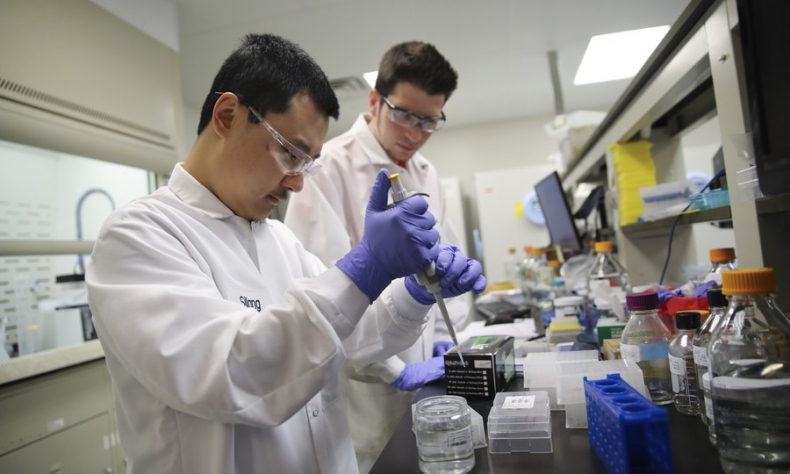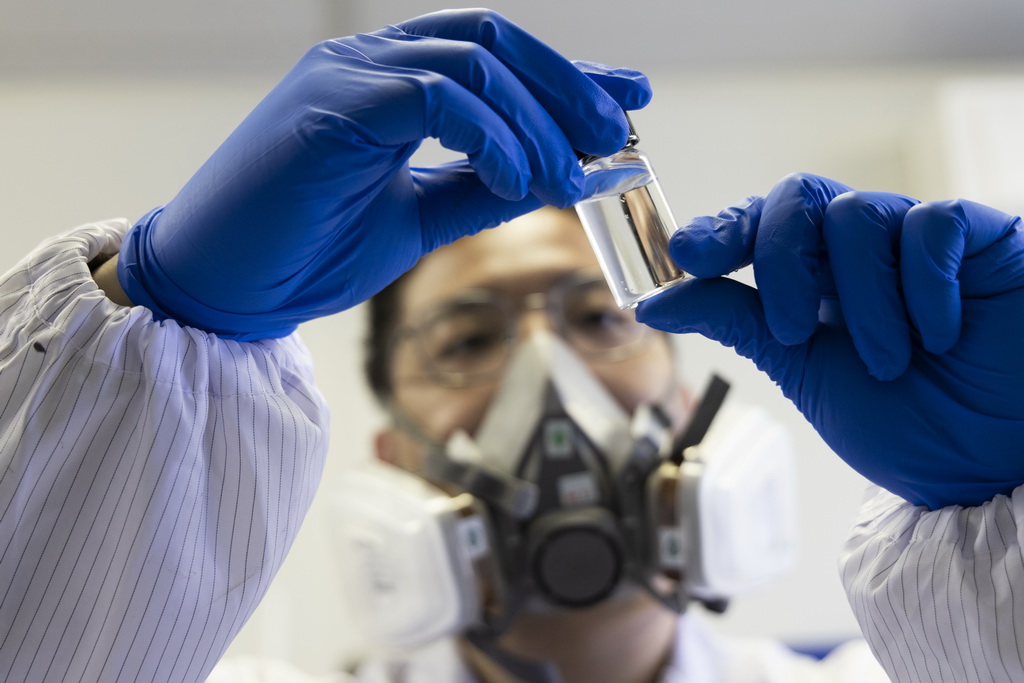China and U.S. Deliberate Continuation on Scientific and Technological Cooperation

It would be a dangerous folly to bring an end to research cooperation that has such potential to help meet the many challenges faced by China, the U.S. and the rest of the world.
The visits of American scientists to China in the 1970s catalyzed Sino-U.S. diplomatic relations, ultimately leading to the signing of the U.S.-China Science and Technology Cooperation Agreement (STA) in 1979.
This pivotal agreement, which was routinely renewed every five years and expired last August, was granted an extension by Beijing and Washington to allow for an additional six months of negotiations. Scientists and researchers in both countries are eagerly awaiting the final decision on the possible renewal.
“On behalf of the U.S. Government, the Department of State is negotiating to amend, extend and strengthen protections” within the pact, a department spokesperson said in a statement to the newspaper South China Morning Post on February 26.
According to Chinese Foreign Ministry spokesperson Mao Ning, the agreement is mutually beneficial in nature, and “the two sides have been in communication on the renewal of the agreement.”
Why does this matter?
Signed in 1979 by then U.S. President Jimmy Carter and China’s Vice Premier Deng Xiaoping, in the same month that China and the U.S. normalized diplomatic relations, the STA paved the way for 45 years of research collaboration between the two countries.
As the first bilateral deal between the nations, it has been subject to renewal every five years, with its most recent renewal taking place in 2018 under then U.S. President Donald Trump.
According to an editorial in Nature journal published on February 26, the world’s leading multidisciplinary science journal, the two nations had little or no formal relationship before China and the U.S. established diplomatic relations. What they did share, however, were high levels of mistrust. The editorial noted that science cooperation was considered a relatively swift means to initiate interactions and build connections between the people of both countries.

The STA primarily aims to promote the progress of science and technology for the mutual benefit of both nations and the broader global community. It encompasses cooperative efforts across various sectors, including agriculture, energy, health, environment and more. This collaboration may involve the exchange of expertise and technological information, joint research, as well as the joint planning and implementation of programs and projects.
Serving as an umbrella for all activities in the science and technology realm, the agreement outlines guiding principles rather than specifying exact collaborations, which are to be detailed in documents agreed upon by the respective entities involved from each nation.
One instance has been the cooperation between the U.S. Department of Agriculture and China’s Ministry of Agriculture and Ministry of Science and Technology (MOST) initiated within the agreement’s framework. The collaboration was deepened in 2002 when the Protocol on Cooperation in Agricultural Science and Technology was signed. Activities under the protocol are spelled out in twelve annexes.
Collaboration between the two countries on environmental protection includes projects to monitor and improve air and water quality, as well as watershed protection, and projects to reduce electronic waste—benefiting both countries in different ways. The U.S. Environmental Protection Agency called its relationship with China “one of its most significant.”
“Each country is the other’s biggest research partner, by a considerable margin,” the Nature editorial read. In 2022, roughly 60,000 joint articles by participants from China and the U.S. were published on Web of Science, a database of peer-reviewed scholarly papers. That number was about 2,600 in 2000.
An analysis by Caroline Wagner, a professor of public policy at Ohio State University, shows that China became the U.S.’ top partner in science and technology around 2015-16, supplanting the UK.
“[The agreement] holds symbolic value insofar as its existence implies that science and technology cooperation has the blessing of both Beijing and Washington,” Denis Simon, a Distinguished Fellow at the Washington-based Institute for China-America Studies, told Chinese newspaper Global Times. “Without the endorsement of each respective government, many scientists and researchers, as well as administrators, may be skeptical that their interests can be protected.” Simon added that the failure to reach a new agreement would be detrimental to both countries.
Unfortunately, a new agreement was not signed on February 27 as originally anticipated. The positive development is that the two sides are still in discussions about the potential continuation of the pact, although the final outcome remains uncertain at the time of writing.

Why the delay?
This is not the first time the STA renewal has been delayed.
During his term as president, Trump initiated an investigation into China’s intellectual property practices. In mid-August 2017, he instructed U.S. Trade Representative Robert E. Lighthizer to launch a probe into China’s alleged infringement on U.S. intellectual property rights.
In 2018, the Trump administration launched the China Initiative to investigate allegations that U.S.-based Chinese scientists were transferring advanced technologies to China. Academics criticized the initiative for impeding scientific cooperation and dissuading Chinese academics from relocating to or remaining in the U.S.
“This has clearly affected collaborations, but has also had a broader reach. There has been surveillance of some innocent researchers,” Nature noted.
From 2016 to 2018, the renewal of the agreement went through temporary extensions, with the longest lasting up to one year. The two nations eventually reached an agreement in August 2018 to officially renew the pact.
Today, there are certain groups, especially in the U.S. Congress, that oppose the idea of revising the existing or establishing a new agreement. In June 2023, Republican Representative Mike Gallagher, along with nine of his Republican colleagues, wrote to the U.S. Secretary of State, urging the administration not to renew the expiring agreement.
Despite the fact that no projects under the agreement involve sensitive or classified research, Gallagher still expressed concern that “extending the U.S.-China science agreement would further harm our research and intellectual property” and that “the U.S. must stop fueling its own destruction.”
However, “many scientists and researchers in the U.S. and China are continuing to sit on the edge of their seats” in anticipation of the renewal, Simon remarked. Prior to the six-month extension of the agreement on August 24, 2023, two Stanford physicists, Peter Michelson and Steven Kivelson, gathered signatures from 1,000 scientists and scholars from U.S. universities in support of renewing the agreement.
“I think the scientific community needs to speak out because I don’t think their voices are always heard,” Michelson told the South China Morning Post on September 6, 2023, noting that scientists are often preoccupied with their work in laboratories and offices, focusing on research rather than politics.
According to the Nature editorial, China and the U.S. now risk veering off course after 45 years of scientific cooperation. “It would be a dangerous folly to bring an end to research cooperation that has such potential to help meet the many challenges faced by China, the U.S. and the rest of the world.”
“In 1979, scientists broke the ice at a time of great tension. As tensions rise once again, researchers could be the foot in the door that keeps communications open,” the editorial concluded.
 Facebook
Facebook
 Twitter
Twitter
 Linkedin
Linkedin
 Google +
Google +










